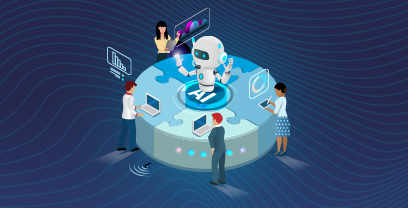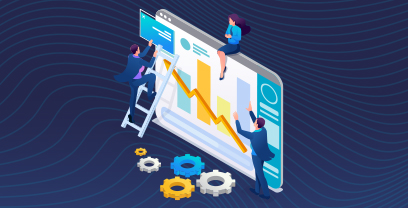Whether you’re a seasoned procurement professional or new to the field, understanding the Source-to-Pay (S2P) process is crucial in today’s fast-paced business environment. In this blog post, we’ll dive into the nuances of what S2P really entails, explore its myriad benefits, and unpack best practices for the successful implementation of an S2P platform that plays well with your existing technology stack.
Understanding the Source-to-Pay Process
The Source-to-Pay Process is a comprehensive approach that encompasses all activities from the initial sourcing of goods and services to the final payment. This end-to-end process is integral to effective procurement and supply chain management, ensuring that organizations acquire goods and services in the most efficient and cost-effective manner.
The S2P process is characterized by a strategic approach to procurement that focuses on long-term goals, cost efficiency, supplier relationships, risk management, and alignment with broader business objectives. This contrasts with a purely operational approach, which would focus mainly on the day-to-day tasks of ordering and paying for goods and services.
The ultimate goal of Source-to-Pay is to optimize procurement processes, minimize costs, and ensure that an organization receives the goods and services it needs in a timely and cost-effective manner while maintaining good supplier relationships with low risk and optimal performance. S2P is not a static process; it involves continuous evaluation and improvement. Organizations must adapt their procurement strategies based on changing market conditions, new technologies, and internal business needs.
What Are the Steps in the Source-to-Pay Process?
- Spend analysis: This step involves understanding the specific requirements and the quantity needed, often determined by various departments within the company. Understanding spend is also critical for determining who to buy from, what to buy, how much to buy and whether a purchase aligns with budgets and contracts.
- Sourcing: This is where various suppliers are invited to fulfill a certain requirement. An RFI/RFP is issued and suppliers provide their responses, one or more is selected and awarded business.
- Supplier Management: This is the foundation of the S2P process, and involves supplier onboarding, information and risk management, and performance management throughout the source-to-pay cycle. A 360-degree view into supplier data is essential.
- Contract Authoring & Negotiation: This stage involves creating a contract, negotiating terms and conditions before final approval of the contract and making it live and active for purchasing.
- Purchasing: Purchasing involves creating a requisition or an intake to capture a users need and issuing a purchase order (PO) to the supplier, officially requesting the goods or services under the agreed-upon terms but also in many cases where there is no contract in place.
- Receiving and Quality: Once the supplier delivers the goods or services, they are received and inspected to ensure they meet the specified requirements and standards. This stage is crucial for quality control and to ensure that the goods or services are as per the contract.
- Invoice Processing and Reconciliation: After the goods or services are received, the supplier issues an invoice, which is matched with the PO and the goods receipt for accuracy. This process, known as three-way matching, is vital for ensuring that the invoiced amount is correct and aligns with what was ordered and received.
- Payment: Once the invoice is verified and approved, the final stage of the process is making payment to the supplier. Timely payments are essential for maintaining good supplier relationships.
Benefits of an Automated Source-to-Pay Process
S2P automation plays a pivotal role in automating and enhancing the efficiency of Procurement teams to achieve better visibility and control over spend management activities. Source-to-Pay automation can transform how organizations manage their sourcing activities, including:
- Increased Efficiency: Automation streamlines the entire S2P process, from sourcing to payment, reducing the time and effort required for manual tasks.
- Cost Reduction: Source-to-Pay automation reduces costs by enabling organizations to analyze spending patterns and supplier performance, and reducing labor costs associated with manual processing and errors.
- Enhanced Accuracy and Compliance: Source-to-Pay Automation ensures accuracy in transactions and compliance with internal policies and external regulations, as automated systems are programmed to follow set standards and guidelines.
- Improved Supplier Relationships: By automating routine tasks, organizations can focus more on strategic aspects of supplier relationship management, ensure timely payments and communicate more efficiently with suppliers.
- Data-Driven Insights and Decision Making: Automated S2P systems provide valuable data analytics and reporting capabilities for insights into spending trends, supplier performance, and market dynamics.
- Risk Management: Source-to-pay automation helps to monitor supplier performance, ensure contract compliance, and detect anomalies in procurement transactions.
Best Practices for Source-to-Pay Software Implementation
When implementing S2P technology, it’s critical to take into consideration best practices for managing integration issues and change effectively as you roll out the new system.
Integration Issues
Many S2P solutions look tightly integrated in the user interface only to find that they often have a mix of data models and underlying technologies under the hood. This can put a limit on the level of automation that can be achieved across S2P and have the team spend time working on syncing data and processes versus more valuable activities.
Many organizations have a complex IT infrastructure comprising various legacy systems, ERP platforms, and specialized tools. Integration difficulties may lead to data silos, where information is not effectively shared across systems, resulting in inefficiencies and a lack of cohesive visibility into procurement activities due to data inconsistencies and synchronization.
Additionally, integration often requires custom development work to bridge the gap between different technologies, for example creating APIs or using middleware, requiring technical expertise. Moreover, integration isn’t a one-time task; it requires ongoing maintenance and updates to ensure compatibility with system upgrades or changes in business processes.
Partnerships that enable these integrations are essential. Ivalua’s S2P Platform is designed to seamlessly integrate with a wide range of systems and applications, including ERP systems, financial software, and third-party applications, Ivalua’s S2P platform enables smooth data exchange and process synchronization with our built-in Integration Hub, helping organizations to consolidate their procurement data and workflows.
S2P Software Integration Best Practices:
- Have a clear integration strategy
- Involve IT experts early in the implementation process
- Choose an S2P platform known for its integration capabilities
Change Management
Employees accustomed to traditional procurement processes might be hesitant to adopt a new S2P system, especially if they perceive it as complex or threatening to their current role. This resistance can manifest as a lack of engagement, reluctance to learn the new system, or even outright opposition, hindering the smooth transition to the new platform.
An S2P platform often brings in new functionalities and workflows, requiring users to acquire new skills, as well. Inadequate training can lead to platform underutilization, errors, and employee frustration.
Additionally, effective communication is crucial to ensure that everyone understands the reasons for the change, the benefits of the new system, and how it will impact their individual roles. Without clear and ongoing communication, misconceptions can arise, reducing buy-in and support.
S2P Software Change Management Best Practices:
- Employ a comprehensive change management strategy that involves key stakeholders
- Provide tailored training and support programs
- Look for built-in digital adoption functionality
- Ensure clear, transparent communication
Case Study: BELL Successfully Implements Ivalua’s S2P Platform
BELL, a major telecommunications company in Canada, recently implemented a global overhaul of its expense management system, overcoming an array of theoretical and technical challenges. They needed to support a significant number of concurrent users and numerous types of expenses, and encourage instant user adoption though a simple, efficient user interface. Seamless integration with existing systems and configurable approval workflows were essential, as well as the ability to handle large volumes of sensitive customer data.
Working with Ivalua partner OJC Consulting, Bell was able to deploy the Ivalua Expense Module for all of its 55,000 employees, with zero critical issues and 100% customer satisfaction. With Ivalua, Bell has saved money by reducing maintenance and sales tax, while providing a better procurement experience for employees. Read the full case study: BELL Successfully Implements Ivalua’s S2P Platform.
2024 Trends in Source-to-Pay Technology
The future of S2P technology is shaped by several emerging trends. Probably the most notable is the increased use of Generative Artificial Intelligence (AI) and Machine Learning (ML) in procurement.
AI/ ML can analyze vast amounts of data, identifying patterns and trends that human analysis might miss. This can lead to more accurate demand forecasting, improved supplier selection, and better risk management strategies.
Generative Artificial Intelligence (AI) in procurement has the potential to impact the procurement function, with the power to learn from large data repositories and generate newly derived versions of content, strategies, designs, and methods. Organizations can apply Generative AI to transform various parts of Source-to-Pay, enhancing efficiency, cutting costs and enabling informed decision-making. Rather than replacing human resources, it frees them up to focus on more strategic aspects of procurement, and apply their creativity and critical thinking skills.
Another key trend is an enhanced focus on Supplier Relationship Management (SRM). Advanced analytics are providing deeper insights into supplier performance, risk assessment, and collaboration opportunities, helping to build more sustainable, resilient, and mutually beneficial supplier relationships
Finally, Cloud-based Source-to-Pay solutions will continue to grow, offering scalability, flexibility, and remote access. These solutions enable real-time collaboration, updates, and access to procurement data from anywhere. Staying ahead of these trends can provide a significant advantage. driving innovation, efficiency, and value in procurement operations. Download Gartner’s Strategic Roadmap for Source-to-Pay Technology, which provides invaluable insights about leading S2P platforms.
Digitize Procurement from Source-to-Pay with Ivalua
As your organization faces the challenges of increasing complexity, risk, and expectations, managing spend is essential. Source-to-Pay transformation is a necessary step toward achieving this goal, because it enables you to reduce costs, improve supplier management and relationships, and minimize risk throughout the Procurement lifecycle.
Ivalua’s Source-to-Pay software delivers rapid value with quick deployment packages to get you up and running quickly, seamless integrations to any back-end systems, and a supplier-friendly model that ensures rapid onboarding and a great user experience.




